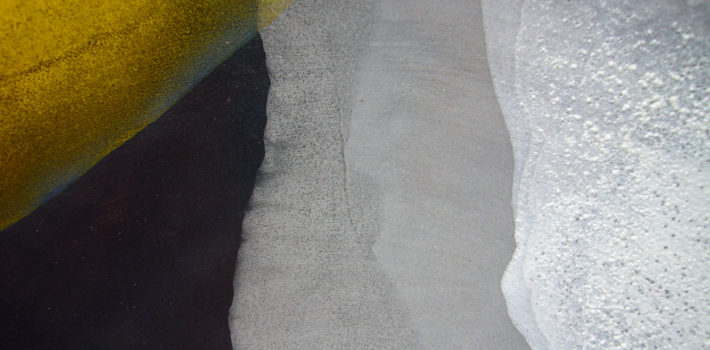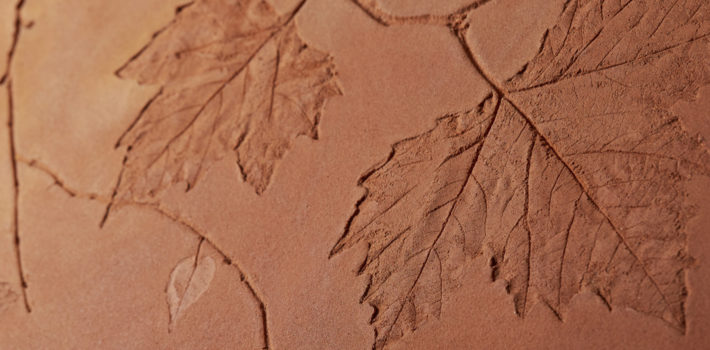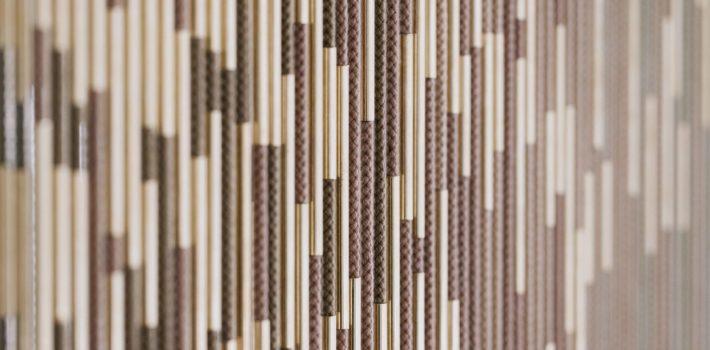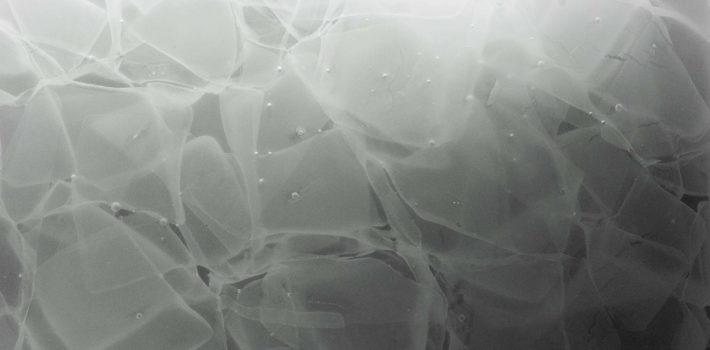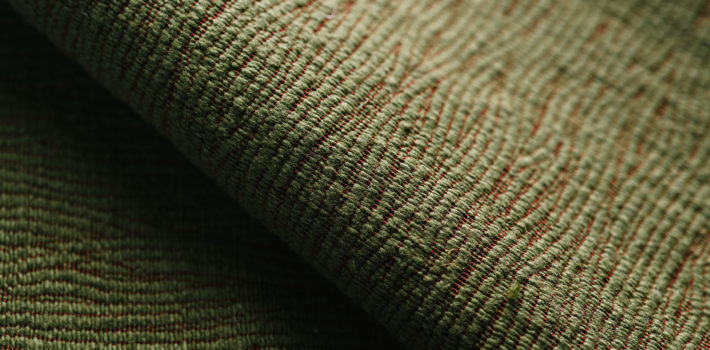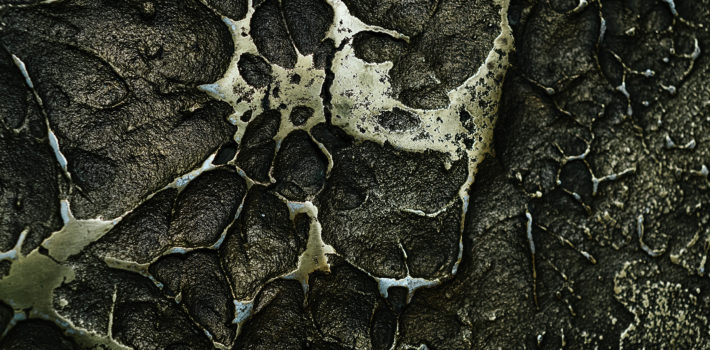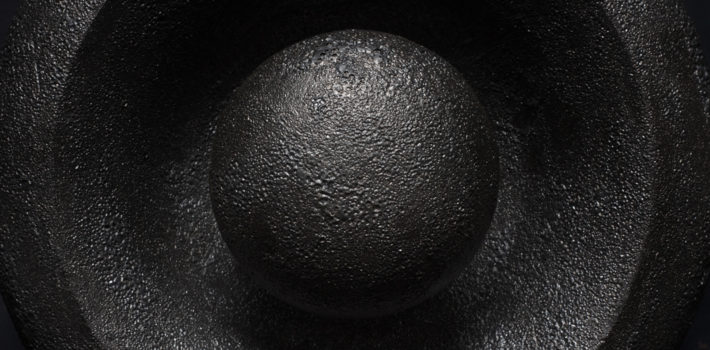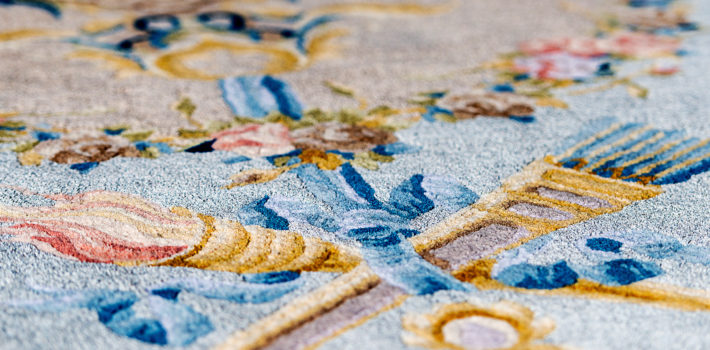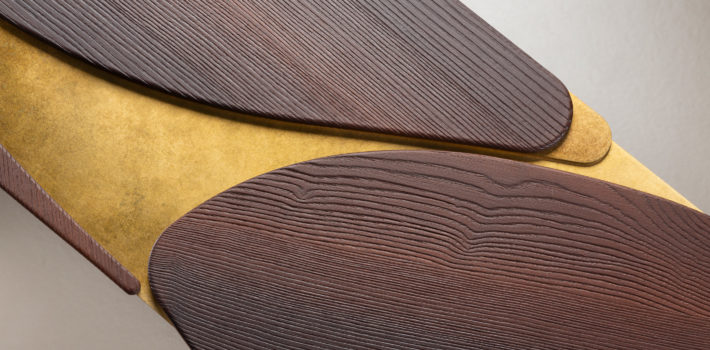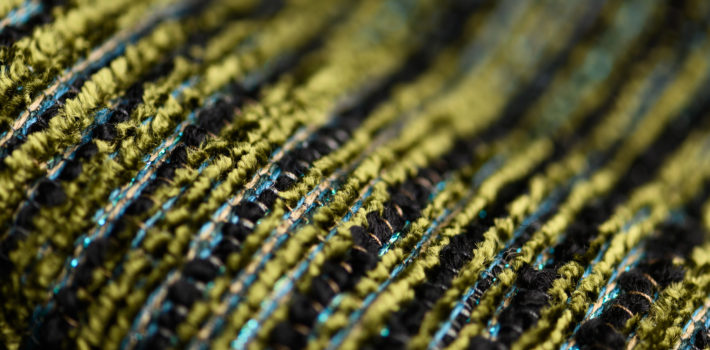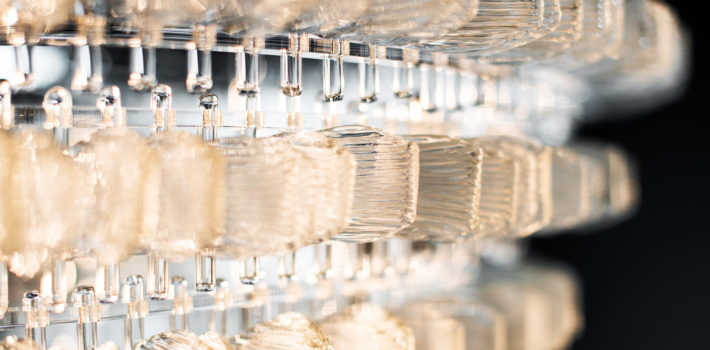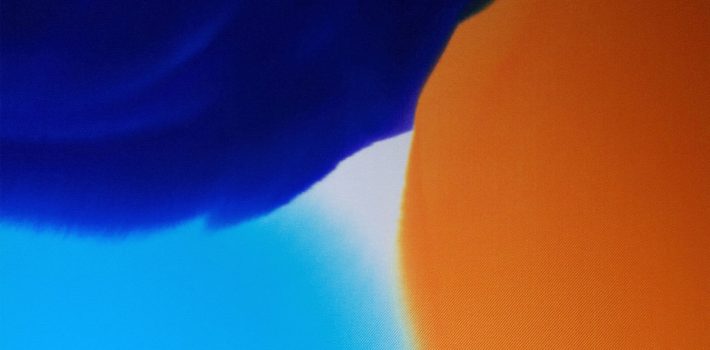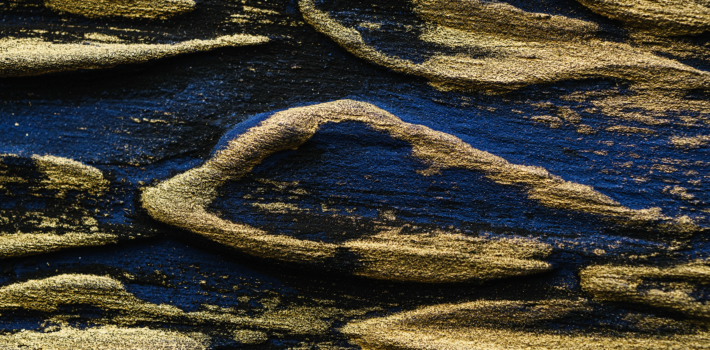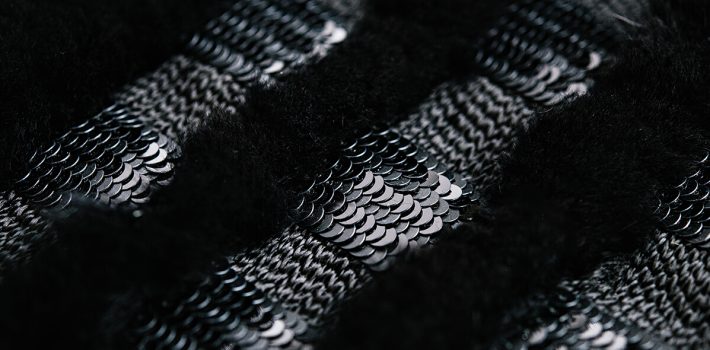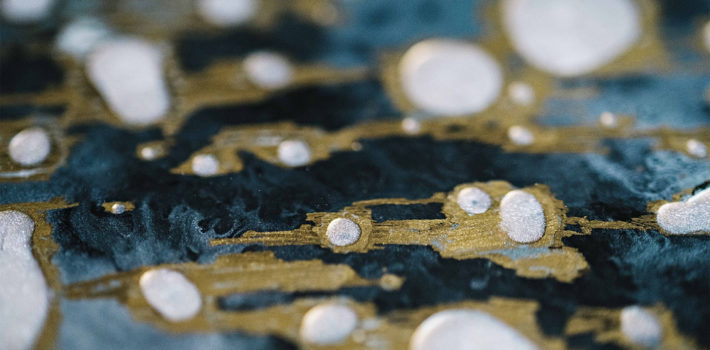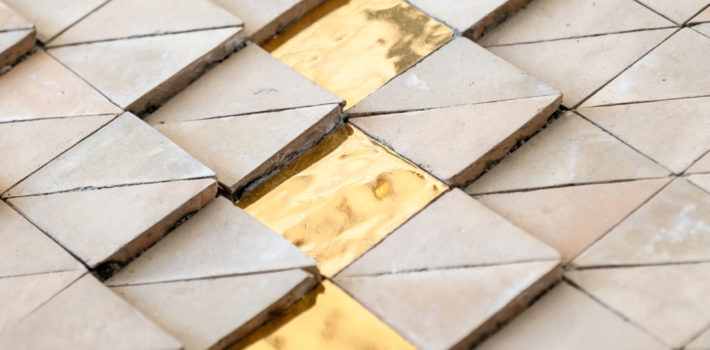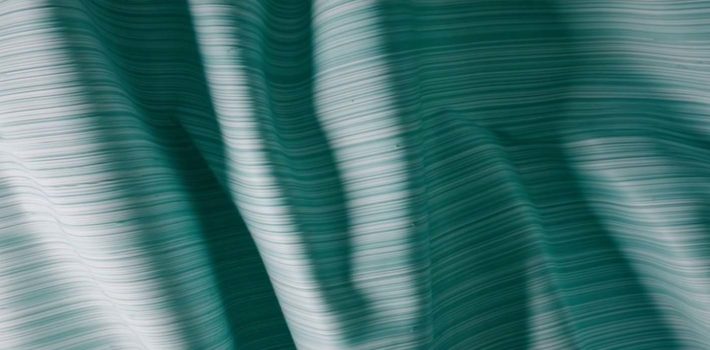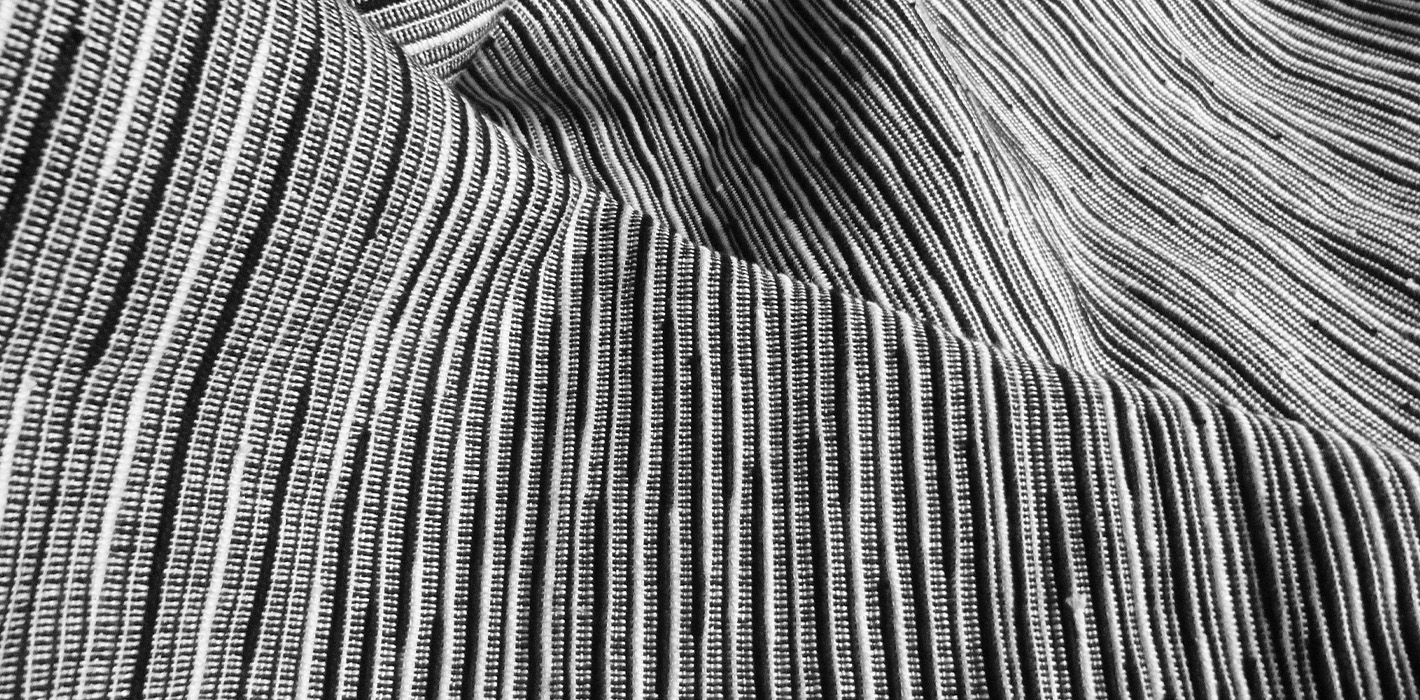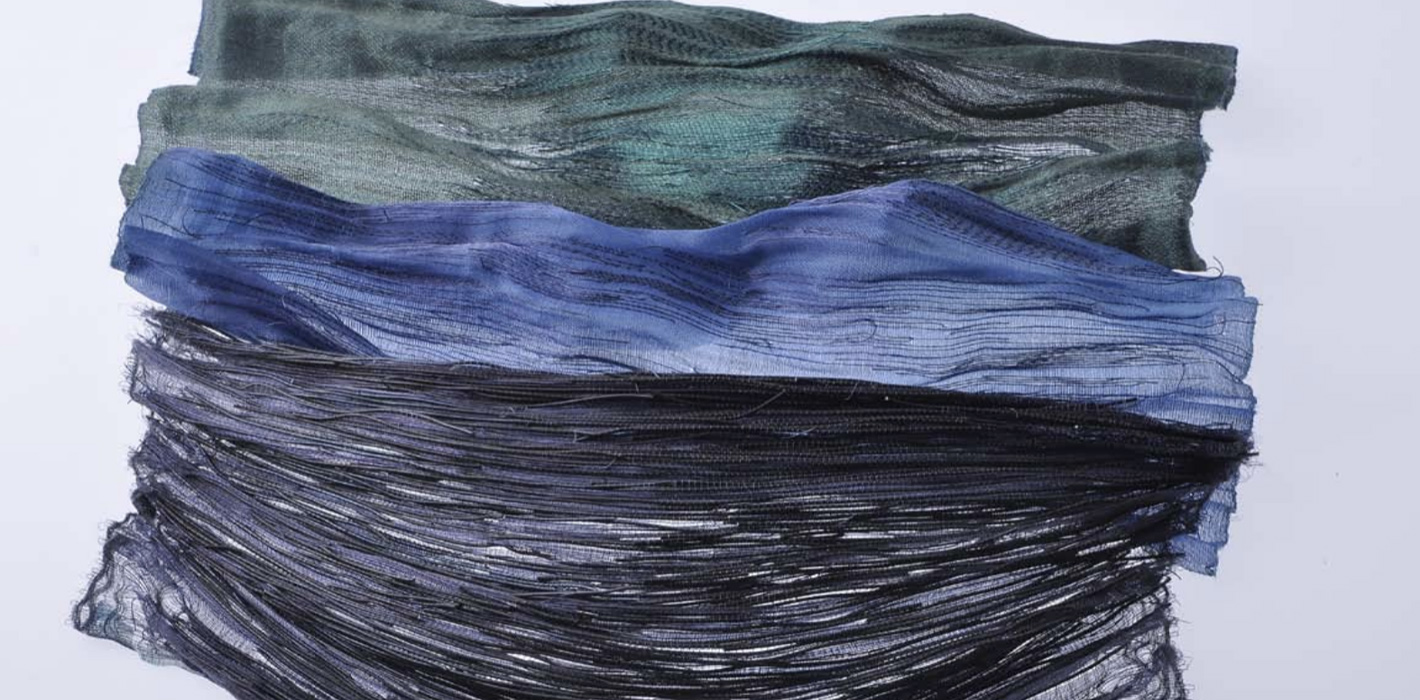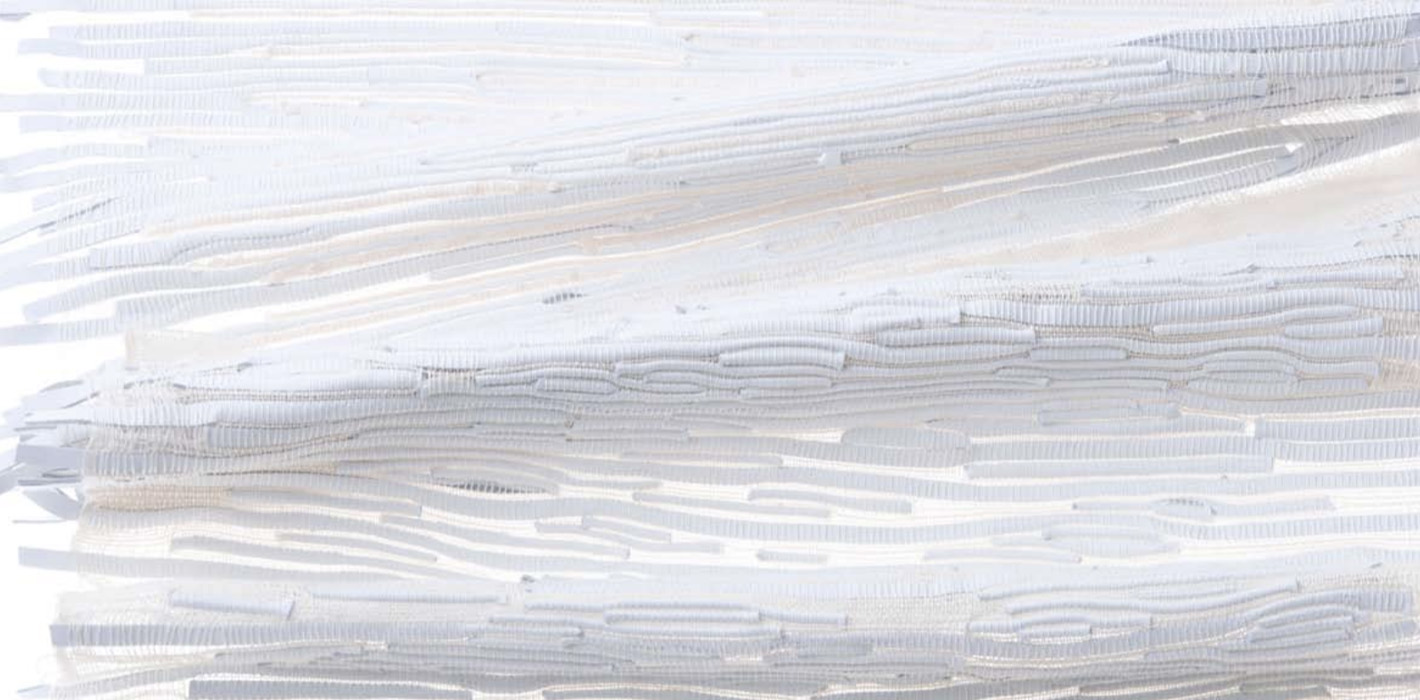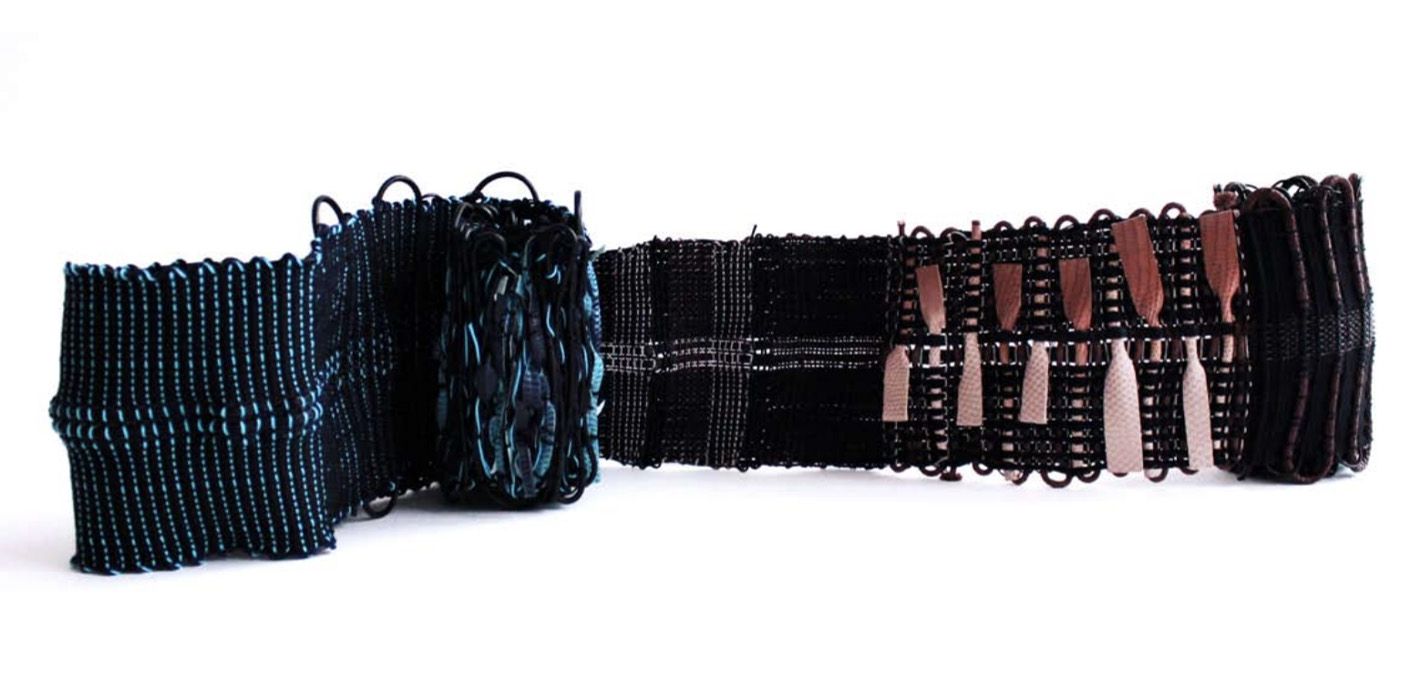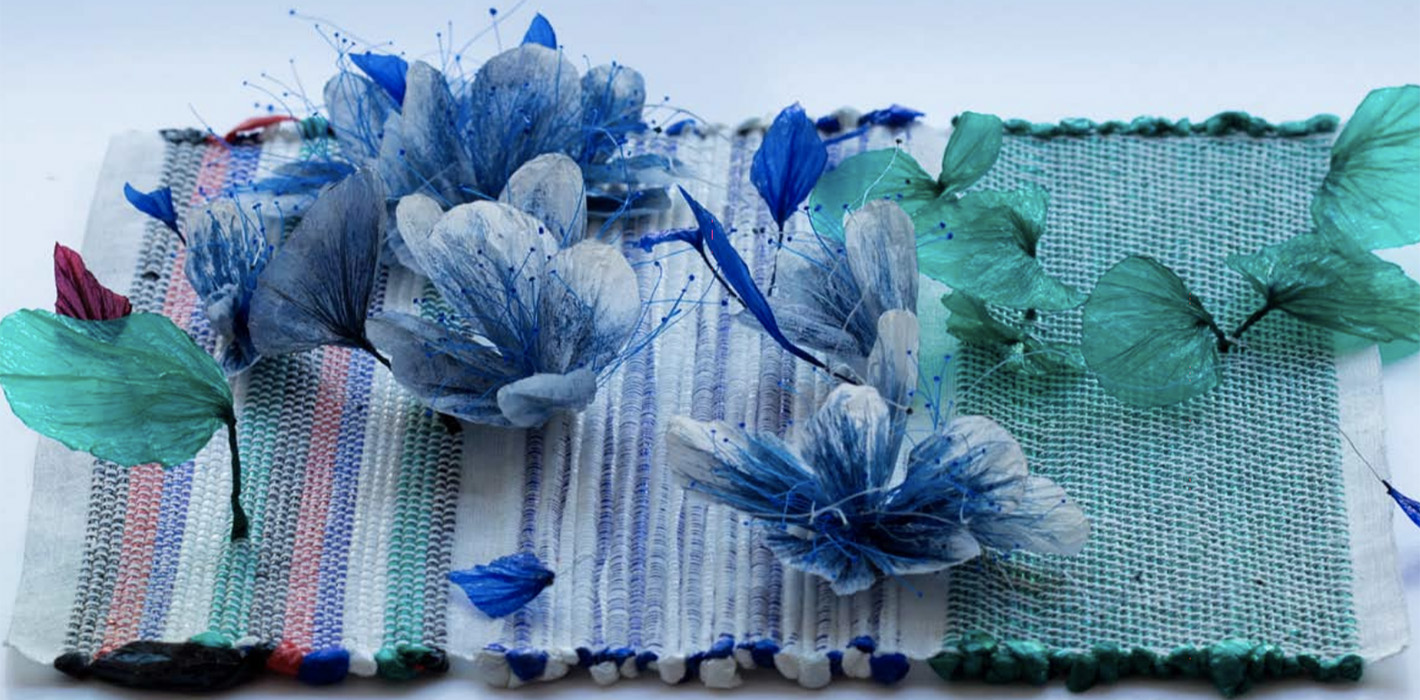Charlotte Kaufmann
Textile designer and embroiderer
Tell us about your background: what training have you followed
and how did you get into textile development?
I dreamed of being a sculptor for the material and the work of gesture, which I was very sensitive to, but I finally turned to industrial design at ENSCI – Les Ateliers. The profession of designer seemed more contemporary and turned towards others. In a design project, we address as much the form as questions of society, usage, environment, etc.
On the fifth floor of the school, I was able to see weaving looms for the first time. I was fascinated. I had never imagined before that textile could be a creative tool, a profession. So I decided to learn weaving at the Duperré School in the Diploma of Arts and Crafts (DMA). After my diploma, I was selected to go to India to train in embroidery with the support of the Culture and Diversity Foundation and UNESCO.
What was the influence of your time in India on your current work?
I stayed in India for almost a year, mainly in Mumbai for embroidery, but also in Gujarat for Tie and Dye techniques, in Jaipur for the weaving of dhurries, and then in Kashmir for the weaving of Pashmina.
Meeting the Indian master craftsmen was a real shock. With them, I learned to surpass myself and that there are no limits when one masters the gesture, everything is possible! This experience was also a great lesson in humility: design must be up to the level of the artisan’s hand and always go further.
In parallel with my workshop in France, the excellence of the know-how in Kashmir and the meeting with Akeel Hussain Mir, a young Kashmiri entrepreneur, inspired me to develop a specific weaving project: Mir Art Gallery where design and know-how meet in collections of Pashmina accessories that value handiwork.
How would you describe your recognizable style?
Gesture is at the center of my weaving work. It animates the woven surface and gives that recognizable organic and spontaneous vibration in my collections. Material is also an inexhaustible source of inspiration: raffia, paper, metal, leather… are all starting points to create new textiles revealed by this work of gesture.
What would be your dream project at this stage
of your workshop’s development?
I would love to develop exceptional projects for interior design as well as for the world of windows shop and shops.
I like the idea of developing total textile ambiences where materials respond to each other, a bit like a landscape.
